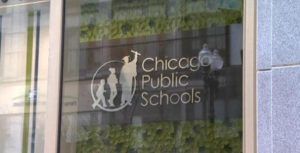
Despite improvements, CPS still lags behind the national average when it comes to graduation rates. (Image courtesy of EAGNews.org)
The rate of Chicago Public Schools students who graduated within five years of starting high school climbed past 77 percent this year, according to new figures provided by the district.
The four-percentage-point gain, which CPS officials have attributed in part to noted improvement among African-American boys, has local educators rejoicing.
“Every time we talk about student performance metrics, the achievement gap is always a focal area for both us as well as the public,” CPS chief education officer Janice Jackson told the Chicago Tribune of the persistent disparity between Black and white graduation rates.
“We are just happy to see that this is an area where we can really boast about not only improvements for the entire district, but for a population that most people, … well, we haven’t seen those types of trends and I think that people kind of expect to see that gap.”
All isn’t peachy keen, however.
Though Mayor Rahm Emanuel’s administration described the improved graduation rates as “blistering,” CPS still lags behind the national average, which also is on the rise. Emanuel’s goal is to have a graduation rate of 85 percent by 2019.
News of the district’s graduation-rate gains among Black boys also was weakened by a recent report from the Metropolitan Planning Council, which examined African-American students’ access to the city’s best high schools, the Chicago Tribune reported.
The paper, published on Thursday, Aug. 31, showed that last year, about 39 percent of all white high school students in CPS were enrolled in one of the city’s top five schools (Jones College Prep, Lane Tech, Northside College Prep, Payton College Prep and Young Magnet High School), compared to just 3 percent of all African-American high school students.
Moreover, white high school students in CPS are 13 times more likely than their Black peers to attend one of the district’s elite high schools, signaling the largest disparity at any point since the 2000-2001 school year.
“The reasons for these trends aren’t entirely clear, but they’re indicative of broad challenges related to growth, economics and segregation facing Chicago and its public schools, particularly in African-American communities on the city’s south and west sides,” the report states.
According to CPS, the latest five-year graduation rate for African-American boys floated just below 63 percent, a nearly 6-percent jump from the year before. The latest overall five-year graduation rate was 77.5 percent. District calculations showed that that number has continued to grow despite an overall declining student population and a steady drop in Black student enrollment.
“I do think it’s worth noting that some part of the change in the system overall is that the system is losing students, losing a considerable number of students, that typically were having a harder time and suffering a great deal in terms of their dropout rates and their graduation rates,” said Alden Loury, the Metropolitan council’s director of research and evaluation. “But I wouldn’t say it’s to the degree that it diminishes the broader impact.”
Jackson agreed.
“We watch the national numbers,” she said. “We’ll continue to chase those and set ambitious goals, but we feel really positive about the trajectory.”


